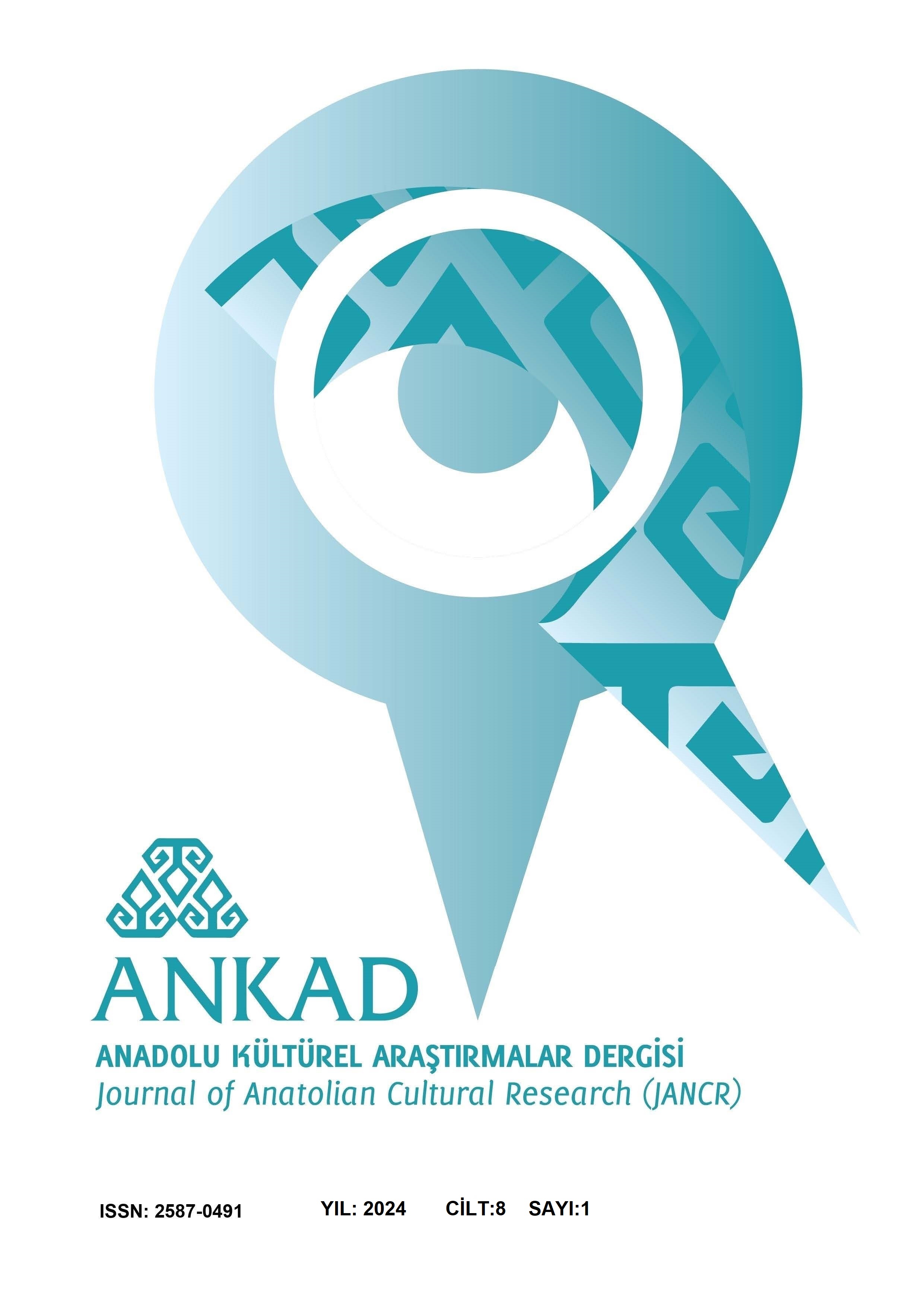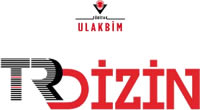İmalat Sektörünün Coğrafi Yoğunlaşması Üzerine Bir Analiz: TR81 Batı Karadeniz Bölgesi Örneği
DOI:
https://doi.org/10.15659/jancr.v8i1.161Anahtar Kelimeler:
İmalat Sektörü- Lokasyon Katsayısı- Coğrafi Yoğunlaşma- Kümelenme- coğrafi faktörlerÖzet
Ekonomik faaliyetler arasında yer alan imalat sektörü kalkınmada önemli bir rol oynamaktadır. Bu nedenle yerel ve bölgesel kalkınma politikalarının hazırlanmasında bölge içinde yoğunlaşmaların olduğu veya yoğunlaşma potansiyeline sahip sektörler dikkate alınmalıdır. Çalışma TR81 Batı Karadeniz Bölgesi’ni oluşturan illerde imalat faaliyetlerinin sektörel ve coğrafi yoğunlaşma düzeyini tespit etmeyi amaçlamaktadır. Bu amaç doğrultusunda çalışmada Sosyal Güvenlik Kurumu’nun (SGK) yıllık istatistik tabanında yer alan sigortalı çalışan ve iş yeri sayısı verilerinden yararlanılmıştır. Çalışmada yıllar arasındaki değişimi ortaya koymak için 2013 ve 2022 yılları tercih edilmiştir. Elde edilen veriler lokasyon katsayı yöntemiyle analiz edilmiştir. Analizde sigortalı çalışanlar ve iş yeri verileri ayrı bir şekilde değerlendirilmiştir. Böylece Zonguldak, Bartın ve Karabük illerinde imalat faaliyetlerinin yoğunlaşma düzeyleri ortaya konulmuştur. Sigortalı çalışan verilerine göre yapılan analizde 2013 yılında Zonguldak ve Karabük illerinde bir, Bartın ilinde ise iki sektörün tam yoğunlaşma düzeyine sahip olduğu sonucuna ulaşılmıştır. 2022’de ise bölgede bulunan bütün illerde birer sektör tam yoğunlaşma düzeyine sahiptir. İş yeri verilerine göre yapılan analizde ise 2013’te Bartın’da iki, Karabük’te bir sektör tam yoğun düzeyine sahipken, 2022’de Bartın ve Karabük illerinde birer sektörün tam yoğunlaşma düzeyine sahip olduğu görülmüştür. Zonguldak ilinde ise hem 2013 hem de 2022 yılında tam yoğunlaşma düzeyine sahip herhangi bir sektör bulunmamaktadır.
Referanslar
Akdağ, G. (2018). TR81 Düzey 2 Bölgesindeki (Bartın, Karabük, Zonguldak) Bireysel Yatırımcıların Finansal Okuryazarlığı ve Bireyleri Finansal Yatırım Kararına Yönlendiren Faktörler [Yüksek lisans tezi]. Bartın Üniversitesi Sosyal Bilimler Enstitüsü.
Akgüngör, S., Kumral, N. & Lenger, A. (2003). National industry clusters and regional specializations in Turkey. European Planning Studies, 11(6), 647-669.
Atalay, Y. (2022). Yeni Ekonomik Coğrafya Teorisi Bağlamında TR81 Bölgesi Dış Ekonomik Çevre Analizi: 2010-2020 Sektörel Panel Veri Analizi [Yüksek lisans tezi]. Zonguldak Bülent Ecevit Üniversitesi Sosyal Bilimler Enstitüsü.
BAKKA, (2014). TR81 düzey 2 bölgesinin sektörel yapı ve rekabet gücünün girdi çıktı modeli ile analizi. https://www.kalkinmakutuphanesi.gov.tr/assets/upload/dosyalar/sektorel-yapy-ve-rekabet-gucunun-girdi-cykty-modeliyle-analizi-01-04-2015-23-21-09.pdf . Erişim Tarihi: 01.01.2024.
BAKKA, (2024). Genel bilgiler. https://www.bakka.gov.tr/bolgemiz/bati-karadeniz/genel-bilgiler#:~:text=TR81%20Bat%C4%B1%20Karadeniz%20B%C3%B6lgesi%20%C3%A7ok,30%20milyondan%20fazla%20n%C3%BCfusa%20eri%C5%9Filebilmektedir Erişim Tarihi: 16.01.2024.
Baer, C. & Brown, T. (2006). Location quotients: a tool for comparing regional industry compositions. Incontext, 7(3), 1-3.
Belussi, F. (2006) “In Search of a Useful Theory of Spatial Clustering: Agglomeration Versus Active Clustering”,Asheim, B. vd. (Ed.), Clusters and Regional Development, USA: Routledge, 69-89.
Brantingham, P. L. & Brantingham, P. J. (1998). Mapping Crime for analytic purposes: location quotients, counts and rates. Crime Mapping and Crime Prevention, 8, 263-288.
Crawley, A., Beynon, M., Munday, M., (2013). Making location quotients more relevant as a policy aid in regional spatial analysis, Urban Studies, 50(9), 1854-1869.
Cromley, R.G. & Hanink, D. M. (2012). Focal location quotients: Specification and applications. Geographical Analysis, 44(4), 398-410.
Çelik, E. ve Sandal, E. K. (2022). Türkiye imalat sanayii ve alt sektörlerinin bölgesel yoğunlaşma yapısı: 2011- 2020 yılı karşılaştırmalı yerelleşme katsayısı analizi. Kahramanmaraş Sütçü İmam Üniversitesi Sosyal Bilimler Dergisi 19(3) 1452-1468. https://doi.org/10.33437/ksusbd.1122318.
Çelikel Yiğiter, S. (2019). İstatistiki bölge birimleri sınıflaması düzey 2 bölgelerinde iş kazalarının değerlendirilmesi. İGS Akademik,1(1),1-11.
Çiftçi, M. (2018). Türkiye’ de bölgelerarası sektörel verimliliğim analizi. İşletme Araştırmalar Dergisi, 10(1), 551 – 580. https://doi.org/10.20491/isarder.2018.407
Deniz, T. ve Özdemir, Ü. (2014) Ekonomik coğrafya açısından bir araştırma: Zonguldak maden kömürü havzasında yabancı işçiler. E-Journal of New World Sciences Academy, 9(4),1-24. http://dx.doi.org/10.12739/NWSA.2014.9.4.4A0051.
Duran, E. (2022). Endüstri 4.0 Kapsamında Savunma Sanayisi Kümelenmeleri: Ankara İli Örneği [Doktora tezi]. Karabük Üniversitesi Lisansüstü Eğitim Enstitüsü.
Eroğlu, O. ve Yalçın, A. (2014). Kümelenmeye ilişkin literatür taraması. Kahramanmaraş Sütçü İmam Üniversitesi İktisadi ve İdari Bilimler Fakültesi Dergisi, 3(2), 81-96.
Ersungur, Ş. M. (2016). Bölgesel İktisat Teori, Politika ve Uygulama. İmaj Yayınevi.
Figueiredo, O., Guimaraes, P., Woodward, D., (2009). “Localization Economies and Establishment Size: Was Marshall Right After All?”, Journal of Economic Geography, 9(6), 853-868.
Groff, E. (2011). Exploring ‘near’: characterizing the spatial extent of drinking place ınfluence on crime”, Australian & New Zealand Journal Of Criminology, 44 (2), 156-179.
Isaksen, A. (1998). Regionalisation and Regional Clusters as Development Strategies in a Global Economy. STEP Centre for Innovation Research.
Isserman, A.M. (1977). The Location Quotient Approach for Estimating Regional Economic Impacts, Journal of the American Institute of Planners, 43(1), 33-41.
Karakayacı, Ö. (2010). Ekonomik büyüme ve girişimcilik aktivitelerinde kümeleşmenin rolü: Bursa ve Konya sanayi kümeleri örneğinde karşılaştırmalı bir araştırma. Megaron, 5(3), 149-159.
Kaygalak, İ. (2011). Türkiye’de sanayi kümelenmesi ve sanayinin yer seçimindeki yeni eğilimler. TÜCAUM VI. Coğrafya Sempozyumu, (1), 169-180.
Keskin, H. ve Dulupçu, M.A. (2010). Kümelenmeler: bir literatür incelemesi. Süleyman Demirel Üniversitesi İİBF Dergisi, 15(2), 441-461.
Li, R. (2015). National and regional socio- economic dependence on the fishery sector in mainland China. Fisheries Management and Ecology, 22 (1), 33-44.
Yavan, N. (2006). Türkiye'de Doğrudan Yabancı Yatırımların Lokasyon Seçimi Üzerine Uygulamalı Bir Araştırma [Doktora tezi]. Ankara Üniversitesi Sosyal Bilimler Enstitüsü.
Malmberg, A., & Maskell, P. (2002). The elusive concept of localization economies: Towards a knowledge-based theory of spatial clustering. Environment and Planning A, 34(3), 429-449.
Manavgat, G. ve Saygılı, F., (2014, 4-6 Haziran). Ege bölgesindeki endüstriyel faaliyetlerin coğrafi yoğunlaşması üzerine bir analiz. International Congress of Turkish Association of Geographers, Muğla, 1-12.
McCord, E. S., & Ratcliffe, J. H. (2009). Intensity value analysis and the criminogenic effects of land use features on local crime Patterns. Crime Patterns and Analysis, 2(1), 17-30.
Munandar, T.B., Azhari, Musdholifah A. & Arsyad, L. (2017). Modified agglomerative clustering with location quotient for identification of regional potential sector. Journal of Theoretical and Applied Information Technology, 95(5), 1191-1199.
Morgan, J. Q. (2004). The Role Of Regıonal Industry Clusters In Urban Economıc Development: An Analysıs Of Process And Performance [Unpublished doctoral thesis]. North Carolina State University.
Oral, M. (2014). Kümelenme Yaklaşımının Firma Performansına Etkisi: Ankara OSTİM Örneği [Yüksek lisans tezi]. Ankara Üniversitesi Sosyal Bilimler Enstitüsü.
Özdemir, Ü. (2010). Demir Yolu Ulaşım Politikaları ve Karabük Demir Çelik Fabrikalarının Kuruluşu, Kuruluşundan Bugüne Karabük ve Demir Çelik Sempozyumu.
Özdemir, Ü., Kantürk Yiğit, G ve Ünlü, İ. (2021). Atölye tip imalat açısından Safranbolu lokumları üzerine bir durum çalışması. Özüdoğru, H., Aydın, F. Ve Özkan, F.H. (Ed.) Pandemi Sürecinde Ekonomi ve Sosyal Bilimlerde Yeni Eğilimler içinde (381-408) Gazi Kitapevi.
Seçkin, E. (2015). Perakende sektöründeki yapısal dönüşümün Bursa’daki üretim piyasası ile tüketim piyasasına yansıması. Megaron, 10(1), 70-79.
SGK (2023) Yıllık İstatiskler. https://www.sgk.gov.tr/Istatistik/Yillik/fcd5e59b-6af9-4d90-a451-ee7500eb1cb4/ Erişim Tarihi: 25.12.2023
Sungur, O. (2015). TR61 (Antalya, Isparta, Burdur) Bölgesinde Sektörel Yoğunlaşmanın ve Yoğunlaşma Dinamiklerinin Analizi. Yönetim ve Ekonomi Araştırmaları Dergisi, 13(3), 289-315.
Şener Uzcan, G. ve Karayılmazlar, S. (2018). TR81 Düzey 2 Bölgesi Orman Ürünleri Endüstrisinin Kümelenme Analizi. Bartın Orman Fakultesi Dergisi, 20 (2), 239-25, https://doi.org/10.24011/barofd.421111.
Tümertekin, E. (1954). Ağır demir sanayii ve Türkiye’deki durumu, İstanbul Üniversitesi Yayınları.
Virtanen, J., Ahvonen, A. & Honkanen, A. (2001). Regional socio-economic importance of fisheries in Finland. Fisheries Management and Ecology. 8(4-5), 393-403.
Yılmaz, M. ve Özdemir, Ü. (2021). Haddehaneler ölçeğinde Karabük’te sanayinin desantralizasyonu. Özüdoğru, H., Aydın, F. Ve Özkan, F.H. (Ed.) Pandemi Sürecinde Ekonomi ve Sosyal Bilimlerde Yeni Eğilimler içinde (79-108) Gazi Kitapevi.
Yuanyuan, C. & Bingliang, S. (2017). Logistics agglomeration and its impacts in china. Transportation Research Procedia, 25, 3875-3885.
İndir
Yayınlanmış
Nasıl Atıf Yapılır
Sayı
Bölüm
Lisans
Telif Hakkı (c) 2024 Anadolu Kültürel Araştırmalar Dergisi (ANKAD)

Bu çalışma Creative Commons Attribution-NonCommercial 4.0 International License ile lisanslanmıştır.













